WHAT HAPPENED IN VEGAS? filmmaker Ramsey Denison will participate in a Q&A at the Music Hall following the 9 PM screening on Friday, December 1.
https://vimeo.com/242978686
by Lamb L.
WHAT HAPPENED IN VEGAS? filmmaker Ramsey Denison will participate in a Q&A at the Music Hall following the 9 PM screening on Friday, December 1.
https://vimeo.com/242978686
by Lamb L.
Big Sonia Q&A Schedule:
Music Hall, Beverly Hills
Friday 12/8 at 7:20pm: Directors Leah Warshawski and Todd Soliday
Saturday 12/9 at 2:30pm: Directors Leah Warshawski and Todd Soliday
Saturday 12/9 at 7:20pm: Director Todd Soliday
Town Center, Encino
Saturday 12/9 at 7:45pm: Director Leah Warshawski
Sunday 12/10 at 3:15pm: Directors Leah Warshawski and Todd Soliday
Sunday 12/10 at 7:45pm: Directors Leah Warshawski and Todd Soliday
Big Sonia praise:
“Poignant” —The New York Times
“It’s brilliant” —Film Journal International
“A stunning documentary” —Jeffrey Lyons, Lyons Den Radio, WCBS
“A film about history, how we carry it with us and why it matters” —Eye for Film
“An intimate and delicately measured documentary” —Slant Magazine
by Lamb L.
THE MOVIE OF MY LIFE director Selton Mello will participate in Q&A’s at the Music Hall after the 7:20 PM screenings on Wednesday and Thursday, November 29 and 30.
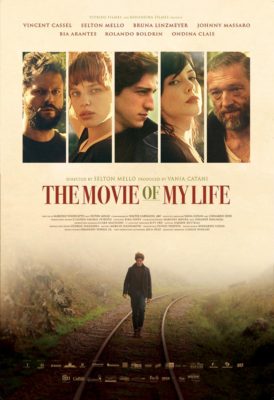
by Lamb L.
MACHINES director Rahul Jain will participate in Q&A’s at the Royal after the 11 AM screenings this Sunday, November 26.
by Lamb L.
‘1945’ Examines Postwar Angst in Hungary
BY TOM TUGEND | PUBLISHED NOV 17, 2017
An ancient train, belching black smoke, pulls into a station near an unnamed Hungarian village and out step two Orthodox Jews. Not losing a moment, the stationmaster sounds the alarm: “The Yids are coming!”
The year — and the title of the movie — is “1945,” a time when the inhabitants of the village and the rest of their countrymen have arrived at a junction in history and are unsure which path to follow.
While Hungary’s Holocaust-themed movie “Son of Saul” won the Academy Award for foreign-language film two years ago, exhibiting the full horror of the Shoah and its concentration camps, the postwar “1945” probes the potential for greed and selfishness in every human being.
“We are the third postwar generation,” director Ferenc Torok said in a phone interview from Budapest. “And a lot of people are asking what their parents and grandparents did during the world war.”
The film takes place in the middle of summer as the villagers till their fields, smoke and drink endlessly, and prepare for the wedding of the son of a domineering town clerk to a pretty peasant girl. Nazi Germany had surrendered two months earlier, in May, and while some Soviet troops have arrived, the Communist puppet government has not yet assumed power.
The two arriving Jews — the older clad in a black coat and hat and his adult son wearing a workman’s cap and clothing — unload two large trunks and hire a horse-drawn cart and its driver to carry their load for the hour-long trip to the village, while father and son follow behind on foot.
As the odd procession wends its way through the countryside, the stationmaster’s warning stokes the villagers’ fears that the survivors among their former Jewish neighbors now will demand the return of the houses, businesses and furniture they left behind when they were deported to concentration camps. That means the town clerk would no longer own the drug store and his wife could no longer glory in the beautiful rugs, dishes and silver menorah of the previous owner.
In the ensuing panic, some try to hide their ill-gotten gains, while others put their hopes in papers, signed by the pro-Nazi wartime government, “officially” transferring the abandoned homes and goods to the gentile neighbors.
When horse, cart and the “Yids” arrive at the village, women peek through shutters, the pharmacist tries to hide his tubes and bottles. Rumors spread that the trunks contain perfumes and beauty aids to sell to the village women.
Finally, the cart and two men arrive at the gates of the abandoned Jewish cemetery. The younger Jew, with a concentration camp number tattooed on his forearm, takes a key out of his pocket and opens the rusty gate, as a posse of hostile villagers gathers nearby. Inside the cemetery, father and son open the trunks and bury the unexpected contents. In the final scene, the two strangers re-board the train, their mission accomplished.
The result is a masterfully directed, acted and photographed movie, which again disproves predictions that the time of the Holocaust-themed movie has expired, even as the last eyewitnesses are dying.
Torok, who is not Jewish, said that part of the continued interest in a place like Hungary, whose Jewish population was decimated during the war, has to do with the fact that for many years while the nation was a Communist satellite, the subject of the Holocaust — and particularly the participation of many Hungarians in it — was taboo. The same applied to the collaboration of many Hungarians with Hitler’s regime, as German and Hungarian troops fought together in the invasions of Yugoslavia and the Soviet Union.
The film started as a short story by Hungarian Jewish writer Gabor T. Szanto, titled “Homecoming,” which won the Yad Vashem Avner Shalev Prize for best artistic representation of a Holocaust-related topic. Torok, relying on Szanto’s intimate knowledge of Jewish life and rituals, asked him also to write the screenplay.
In a separate phone interview, Szanto, editor of the Hungarian-Jewish magazine “Szombat” (Sabbath), made a number of observations on Hungarian Jewry, past but mostly present.
“The Holocaust is still the cornerstone of our thinking, not only for Hungary’s 80,000 Jews (compared with 450,000 before World War II) but to every other Nazi-occupied nation,” he said. “This film is really Europe’s story.”
In general, Hungarian Jews, like their American counterparts, tend to be liberals and left-leaning and they are concerned by their country’s political shift to the right, Szanto said. Among the worrisome signs is the growing strength of the nationalistic Jobbik party.
Another sign is the recent public poster campaign by the Hungarian government, depicting George Soros, a Hungarian-American and Jewish billionaire and philanthropist, as the mastermind of a massive of influx of illegal immigrants from the Middle East into Hungary.
“As a writer, I am a bit of an outsider and try to look at Hungary and its Jewish community realistically,” Szanto said. “We have many problems, but I don’t think they can be solved by ideologies. We can believe in ideals, but our solutions must be realistic. You can’t change human nature.”
“1945” begins screening on Nov. 25 at Laemmle’s Royal Theatre in West Los Angeles, Playhouse 7 in Pasadena and Town Center in Encino, as well as Westpark 8 in Irvine. On Dec. 8, the film will open at the Laemmle’s Claremont 5 in Claremont.
© Copyright 2017 Tribe Media Corp
by Lamb L.
THE MOVIE OF MY LIFE director-actor Selton Mello will participate in Q&A’s at the Music Hall following the 7:20 PM screenings on Friday and Saturday, November 24 and 25, and Monday, November 27.
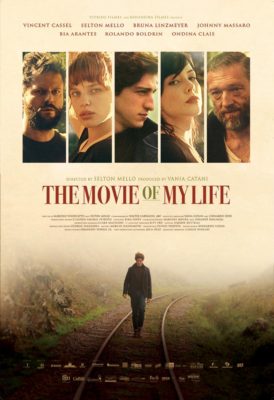
by Marc H
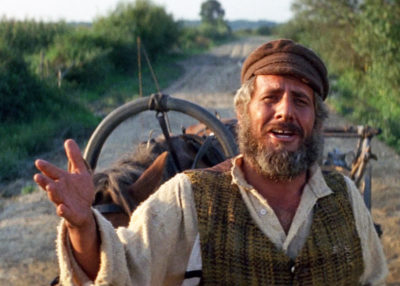
*** FIDDLER UPDATES (skip to main article)
We’re pleased to announce an dynamic and eclectic line-up of Fiddler Hosts for 2017!
Ahrya Fine Arts
Kenny Ellis – entertainer, comedian, singer of Hanukah Swings! – BUY TIX
Royal
Gustavo Bulgach – musician, bandleader of Klezmer Juice – BUY TIX
NoHo 7
Susan Edwards Martin – Broadway star, entertainer – BUY TIX
Playhouse
Jason Moss – of Jewish Federation of the San Gabriel and Pamona Valleys – BUY TIX
Town Center 5
Steve Sass – of Jewish Historical Society (5:00pm show) – BUY TIX
Cantor Phil Baron – of Valley Beth Shalom (7:30pm show) – BUY TIX
Claremont 5
Cantor Paul Buch – of Temple Beth Israel – BUY TIX
Jump below to find out more about our hosts.
—————————————————–
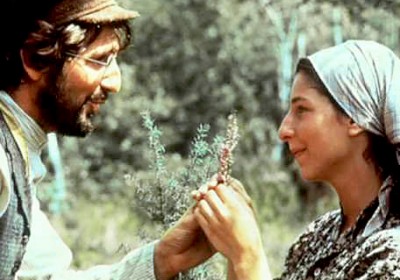 You heard right … it’s our 10th year of FIDDLER! Join us as we celebrate a decade of song, shtick, and shenanigans by once again coming together as a community for Laemmle’s legendary Christmas Eve experience.
You heard right … it’s our 10th year of FIDDLER! Join us as we celebrate a decade of song, shtick, and shenanigans by once again coming together as a community for Laemmle’s legendary Christmas Eve experience.
For 2017, this ever-popular event will be occurring at six of our neighborhood venues including the magnificent single screen, art deco AHRYA FINE ARTS in Beverly Hills (see below for full listing and ticket links).
(Jump down to watch the Sing-A-Long trailer. For tickets, visit Laemmle.com/Fiddler).
In addition to movie and song, the evening will feature TRIVIA with PRIZES being awarded to Fiddler buffs with the quickest recall. Dressing in COSTUME is not required, but highly encouraged! Who knows, perhaps the best costume will garner a prize? Or perhaps this is the year you’ll be given an opportunity to do your best Tevye or Golde impression? That will be up to the emcee. Indeed, each location will feature its own host, among them some of our favorites from year’s past including CANTOR PHIL BARON and klezmer band leader GUSTAVO BULGACH.
As Greg Laemmle is fond of saying “Christmas Eve isn’t just Chinese food!” He elaborates, “This is your once-a-year chance to be the star of the shtetl. Join with friends and neighbors and sing your heart out alongside Fiddler’s screen legends. And it’s okay if you haven’t memorized all the songs. We provide the lyrics.”
Song highlights include the iconic “TRADITION”, “IF I WERE A RICH MAN”, “TO LIFE”, “SUNRISE SUNSET”, “DO YOU LOVE ME?” and “ANATEVKA”, among many, many more.
Don’t be late! Those who wish to attend the program are advised to purchase tickets in advance as the program has traditionally sold to capacity. We welcome all those in the community who are looking for an alternative Christmas Eve.
See you in the shtetl…
https://www.youtube.com/watch?v=CnuyNaOEBt4&feature=youtu.be
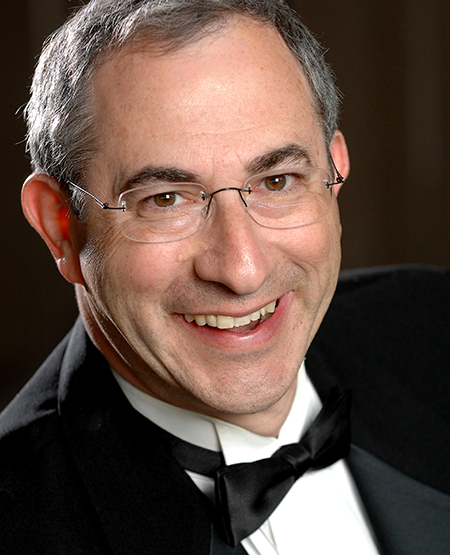 KENNY ELLIS at the Ahrya Fine Arts (Beverly Hills)
KENNY ELLIS at the Ahrya Fine Arts (Beverly Hills)
Once known as “The Man Behind the Matzoh Ball,” cantor and comedian KENNY ELLIS will be our host at the Ahrya Fine Arts in Beverly Hills. He appears in support of our community partner, the LOS ANGELES JEWISH FILM FESTIVAL. As a cantor and comedian, Ellis has entertained audiences all around the globe. Currently the cantor at Temple Beth Ami in Santa Clarita, you can also catch Ellis at the LAUGH FACTORY in Hollywood. Ellis achieved success with HANUKKA SWINGS! a recording that broke new ground as the first ever big band Hanukkah album. Large YouTube audiences have enjoyed “Swingin’ Dreidel” and other tracks from the hit record.
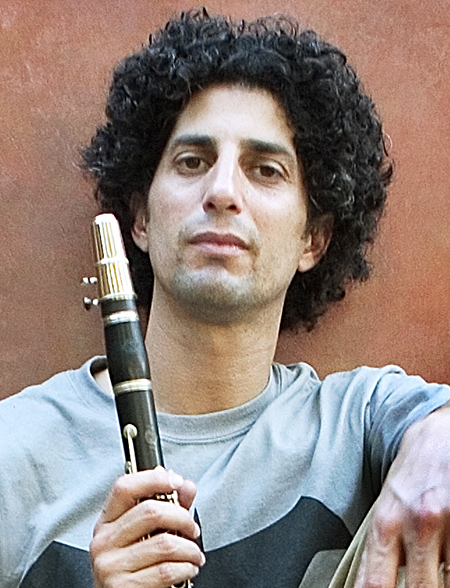 GUSTAVO BULGACH at the Royal (West L.A.)
GUSTAVO BULGACH at the Royal (West L.A.)
Accomplished Klezmer musician and bandleader GUSTAVO BULGACH will be our host at the Royal in West L.A. Born and raised in Buenos Aires, Bulgach was inspired at an early age by the religious and secular life of the Argentine community. Now based in L.A., Bulgach travels the globe uplifting audiences with a vibrant, soulful Klezmer he terms the “soundtrack of the Diaspora.” Bulgach has been a longtime member of the House of Blues Foundation house band backing artist such as LITTLE RICHARD, TAJ MAHAL, and THE WAILERS. His own outfit, KLEZMER JUICE, was featured in the Hollywood mega hit movie THE WEDDING CRASHERS featuring Owen Wilson and Vince Vaughn.
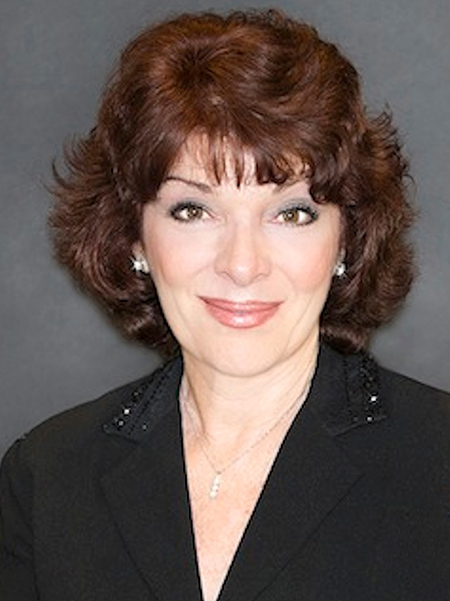 SUSAN EDWARDS MARTIN at the NoHo 7 (N. Hollywood)
SUSAN EDWARDS MARTIN at the NoHo 7 (N. Hollywood)
Broadway star SUSAN EDWARDS MARTIN will represent partner Temple Beth Hillel at our NoHo 7 venue. A star of Broadway, Martin is an accomplished singer, musician, actress and comedienne who originated the role of ‘Lady Blue’ in HARVEY FIERSTEIN’s Tony Award-winning play “Torch Song Trilogy.” She has also appeared in many other Broadway and Off-Broadway productions such as “Bubbling Brown Sugar,” “The Suicide,” and the long-running musical comedy “Scrambled Feet.” Numerous television credits include a recurring role on “Days of our Lives,” and guest appearances on “NYPD Blue,” “Designing Women,” and “Columbo,” among many others. Martin is currently creating a new original musical, “Unlimited” based on her personal story of growing up in Long Island and her ensuing life in show business.
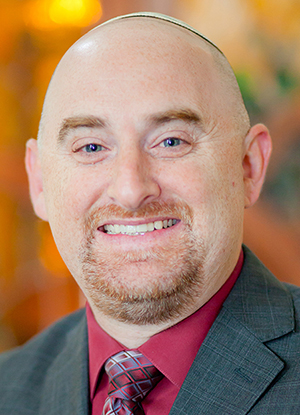 JASON MOSS at the Playhouse 7 (Pasadena)
JASON MOSS at the Playhouse 7 (Pasadena)
Executive Director of the Jewish Federation of the Greater San Gabriel and Pomona Valleys JASON MOSS will be our host at the Playhouse 7 in Pasadena. Under his leadership, the Federation has doubled its programming with the creation of such programs as the Cultural Arts Program, PJ Library, a nationally recognized program to reach and connect with unaffiliated Jewish families. In addition, Moss recently launched JLife SGPV, a lifestyle magazine celebrating Jewish life in the San Gabriel and Pomona Valleys.
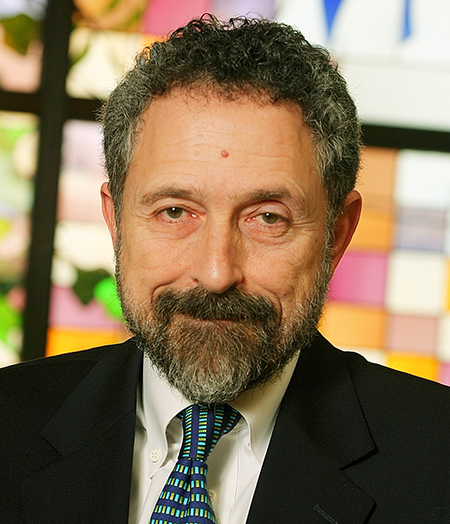 Cantor PHIL BARON at the Town Center 5 (Encino), 7:30pm Show
Cantor PHIL BARON at the Town Center 5 (Encino), 7:30pm Show
Cantor PHIL BARON of Temple Valley Beth Shalom in Encino comes to us courtesy of community partner JEWISH HISTORICAL SOCIETY (JHS) and the BREED STREET SHUL. Baron is the son of a violinist and the grandson of a Vilna rabbi. Before becoming a cantor, he took a successful detour into children’s entertainment, where he had over 300 original songs recorded – nearly 200 of these by the Walt Disney Co. He co-created two television series for Jewish children, Bubbe’s Boarding House, and the multiple award-winning series Alef…Bet…Blast-off! As a vocalist he has been featured with the Los Angeles Jewish Symphony, the Cleveland Orchestra and the New Orleans Philharmonic.
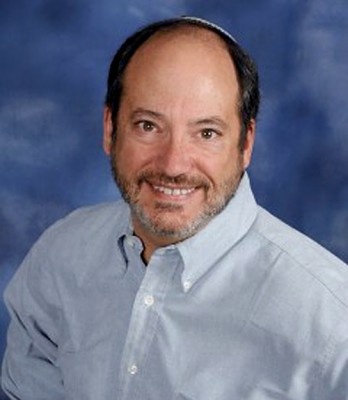 Cantor PAUL BUCH at the Claremont 5 (Claremont)
Cantor PAUL BUCH at the Claremont 5 (Claremont)
Cantor PAUL BUCH has served Temple Beth Israel in Claremont since 2003. He came to the cantorate after a 25 year career in TV and film production in Los Angeles, New York, and Portland. In addition to his cantorial duties, Buch is President of the Claremont Interfaith Council and serves on the Faith-Based Roundtable of the Pomona Unified School District. He is also Chair of the City of Claremont’s Human Relations Committee and serves on an advisory committee at the Claremont School of Theology. This will be his fourth consecutive year as our Fiddler host in Claremont!
DATE: Sunday, December 24th
TIME: 7:30pm
PRICING:
General Admission – $18
Seniors/Children – $15
Premiere Card Adult – $12
Premier Card Seniors – $10
LOCATIONS:
Claremont – Get Tickets
Ahrya Fine Arts – Get Tickets
NoHo – Get Tickets
Playhouse – Get Tickets
Royal – Get Tickets
Town Center – Get Tickets
by Lamb L.
Based on the acclaimed story “Homecoming” by Gábor T. Szántó, 1945 is a haunting film about the deep undercurrents beneath the surface of a quaint village that’s ultimately forced to face up to its “ill-gotten gains” from the Second World War. We open 1945 next week at the Royal, Town Center, and Playhouse and next month at the Claremont 5. Former National Director of the Anti-Defamation League Abe Foxman saw and loved the movie and wrote the following about it:
“The Hungarian Jewish experience during WWII was unique among European countries. Until 1944, Hungarian Jews lived in relative safety despite anti-Jewish laws that existed since 1920 and pogroms in which the military participated (e.g. the 1942 Novi-Sad pogrom where 1000 Jews were murdered).
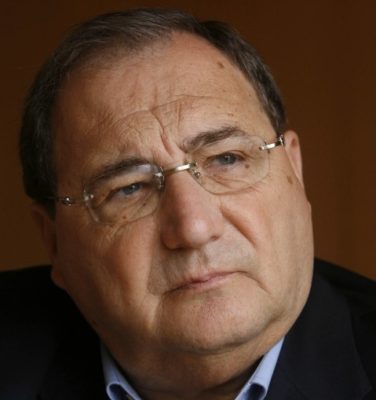
“But then, in March 1944, when the Germans occupied Hungary, Adolf Eichmann implemented the “final solution” in that country and was surprised by the collaboration and great help received from the Hungarian authorities. Thus, the deportation and murder of Hungarian Jews was swift and unparalleled among any other European country – in a few months more than 600,000 Jews were identified and sent to the murder camps.
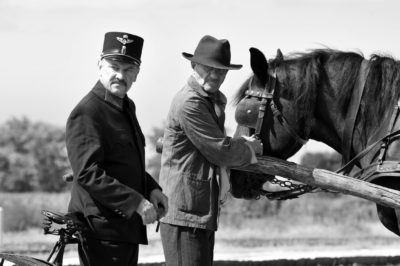
“Only now, more than 70 years after, “Yad Vashem” has succeeded to identify the names of 80% of those who perished but the issue of their property and belongings has hardly been addressed.
“For that reason, the new Hungarian film 1945 , currently playing in NYC theaters and soon opening across North America, is quite relevant to today. But not only because of that…
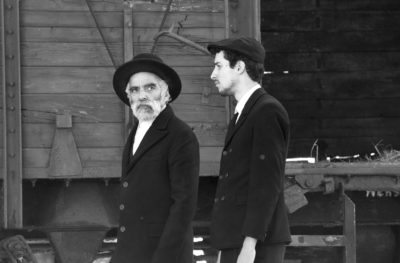
“On one clear day, after the war ended, two Orthodox Jews appear in a small village in Hungary, hiring two locals to carry two trunks labeled “perfumes” for them. All they do is walk slowly, across the village, after the wagon carrying their trunks, but their appearance evokes strong feelings of guilt and remorse that slowly make the village community deteriorate.
“It seems most of the villagers collaborated in extraditing the Jews that lived there up to a year before and gladly took over their property, from kitchenware to their houses.
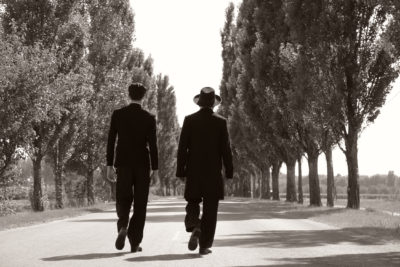
“Shot in beautiful black and white, director Ferenc Torok (who is not Jewish) interprets Gabor Szanto’s (who is Jewish) short story “Homecoming,” with vast strokes of sensitivity and a final mesmerizing emotional effect.
“1945 is a real masterpiece, heightened by the end of the film when we, the audience and the villagers, understand the real mission of these two Orthodox Jews. It’s a rare moment where one of Judaism’s most important contributions to the world, that of guilt and remorse over moral wrong doings and the sanctity of life, are presented in such a heart wrenching way on film.
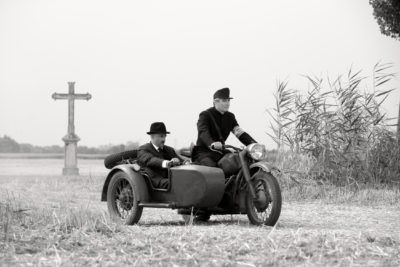
“What is most astonishing is that the two Jews have not traveled to this village to claim their stolen property, but the emotional effect of their silence provokes this issue out from the conscience of the villagers.
“The issue of the stolen property of the Jews is still relevant today. Just recently the Polish government issued a new law which states compensation funds will be awarded only to people that are Polish citizens in the present, thus withholding compensation to the Jews and their descendants whose property was absconded in Poland during these years.
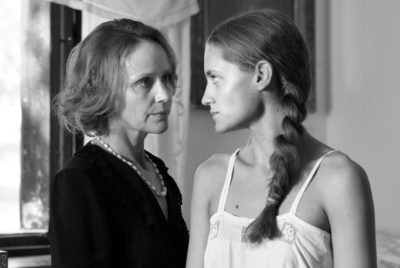
“Although Germany started compensating Jewish victims in the 1950’s, most Eastern European governments are still dragging their feet on this issue.
“The film 1945 is an astonishing new achievement which I highly recommend every human being to see, regardless of his/her religion.”
